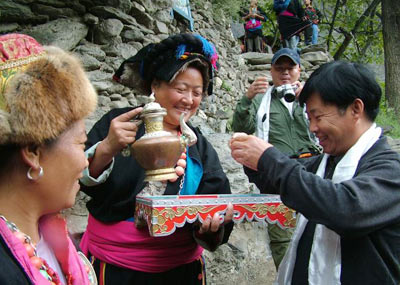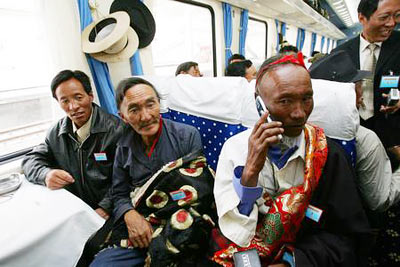| Home / China / Photos | Tools: Save | Print | E-mail | Most Read |
| Decade High for Tibet's Economic Growth |
| Adjust font size: |
The gross domestic product (GDP) of
"The region's fixed asset investment reached 23.2 billion yuan (US$2.9 billion) last year, an 18.4 percent year-on-year increase," said Jinme Doje, director of the Tibet Regional Statistics Bureau. The growth of fixed asset investment was in the main due to the region's infrastructure development such as housing for herders and farmers and the introduction of private investment, Jinme said.
Per capita GDP in Foreign trade leapt by 60 percent last year to US$328 million. Border trade accounted for 53.6 percent of that.
The region had 2.5 million tourists last year, up 40 percent over 2005, and reaped revenue of 2.7 billion yuan (US$350 million) from the visitors. Nearly 20,000 people work in tourism in
"The operation of the Qinghai-Tibet Railway and the Nyingchi Airport, Tibet's third after The Qinghai-Tibet Railway, the first to link The reopening of border trade at the Nathu (Xinhua News Agency |
| Tools: Save | Print | E-mail | Most Read |
 |
| Related Stories |



